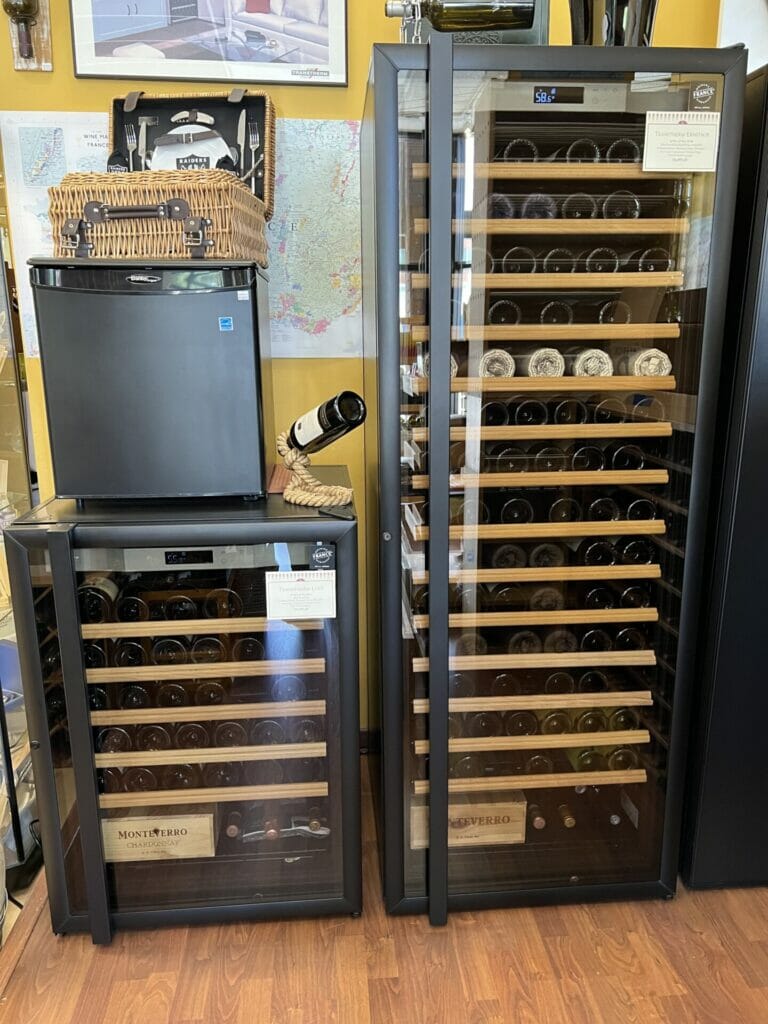Wine Regions to Explore: Discovering New Flavors Around the World
Wine regions play a crucial role in the production of wine. They are not only responsible for the unique flavors and characteristics of different wines, but they also contribute to the overall quality and reputation of the wine. Exploring different wine regions allows wine enthusiasts to discover new and exciting flavors, as well as gain a deeper understanding of the art of winemaking.
The geographical location of a wine region greatly influences the taste and quality of the wine produced there. Factors such as climate, soil composition, and topography all contribute to the unique characteristics of the grapes grown in a particular region. For example, regions with cooler climates tend to produce wines with higher acidity and more delicate flavors, while regions with warmer climates produce wines that are fuller-bodied and richer in flavor.
Exploring different wine regions is not only a way to expand one’s palate, but it also provides an opportunity to learn about the history and culture of winemaking in different parts of the world. Each region has its own winemaking traditions and techniques that have been passed down through generations. By exploring different wine regions, one can gain a deeper appreciation for the artistry and craftsmanship that goes into producing each bottle of wine.
European Wine Regions
Europe is home to some of the most classic and renowned wine regions in the world. From France to Italy to Spain, each region has its own distinct style and flavor profile. In France, for example, Bordeaux is known for its bold red wines, while Champagne is famous for its sparkling wines. Italy, on the other hand, produces a wide range of wines, from light and fruity whites in the Veneto region to full-bodied reds in Tuscany.
Some popular wines from European wine regions include Bordeaux from France, known for its blend of Cabernet Sauvignon and Merlot grapes; Chianti from Tuscany, Italy, made primarily from Sangiovese grapes; and Rioja from Spain, which is made from Tempranillo grapes and aged in oak barrels.
New World Wine Regions
The New World wine regions, which include the Americas and Oceania, have gained recognition in recent years for their innovative winemaking techniques and unique flavor profiles. In the Americas, regions such as California in the United States and Mendoza in Argentina have become known for their high-quality wines. In Oceania, Australia and New Zealand have emerged as major players in the global wine industry.
In California, for example, the Napa Valley region is renowned for its Cabernet Sauvignon wines, while the Sonoma Valley is known for its Pinot Noir and Chardonnay. In Argentina’s Mendoza region, Malbec is the star grape variety, producing bold and fruity red wines. In Australia, regions such as Barossa Valley and Margaret River are known for their Shiraz and Cabernet Sauvignon wines, while New Zealand’s Marlborough region is famous for its Sauvignon Blanc.
Wine Regions of France
France is often considered the birthplace of modern winemaking and is home to some of the most prestigious wine regions in the world. Bordeaux, located in southwestern France, is known for its red blends made from Cabernet Sauvignon, Merlot, and other grape varieties. Burgundy, located in eastern France, is famous for its Pinot Noir and Chardonnay wines. Champagne, located in northeastern France, produces sparkling wines made using the traditional method.
Some popular wines from French wine regions include Château Margaux from Bordeaux, known for its elegant and complex red wines; Domaine de la Romanée-Conti from Burgundy, which produces some of the most expensive and sought-after Pinot Noir wines; and Dom Pérignon from Champagne, a prestigious brand of sparkling wine.
Wine Regions of Italy
Italy is known for its diverse wine regions and the wide variety of wines produced throughout the country. From the northern regions of Piedmont and Veneto to the central regions of Tuscany and Umbria, each region has its own unique winemaking traditions and grape varieties.
In Piedmont, for example, Barolo and Barbaresco are two famous red wines made from the Nebbiolo grape. In Tuscany, Chianti and Brunello di Montalcino are popular red wines made primarily from Sangiovese grapes. In Veneto, Prosecco is a sparkling wine made from Glera grapes, while Amarone della Valpolicella is a rich and full-bodied red wine made from dried grapes.
Wine Regions of Spain
Spain has a rich wine culture and is home to several distinct wine regions. From the famous Rioja region to the lesser-known Priorat and Rías Baixas regions, each region offers its own unique style of wine.
In Rioja, red wines made from Tempranillo grapes are aged in oak barrels, resulting in complex and elegant wines. In Priorat, located in Catalonia, Garnacha and Cariñena grapes are used to produce powerful and concentrated red wines. In Rías Baixas, located in Galicia, Albariño is the star grape variety, producing crisp and aromatic white wines.
Some popular wines from Spanish wine regions include Vega Sicilia from Ribera del Duero, known for its age-worthy red wines; Marqués de Riscal from Rioja, one of the oldest wineries in the region; and Albariño from Rías Baixas, a refreshing white wine with citrus and floral notes.
Wine Regions of South America
South America has emerged as an exciting wine region in recent years, with countries such as Argentina and Chile gaining recognition for their high-quality wines. Argentina’s Mendoza region is known for its Malbec wines, which are characterized by their bold and fruity flavors. Chile’s Maipo Valley is famous for its Cabernet Sauvignon wines, while the Casablanca Valley is known for its cool-climate white wines, such as Sauvignon Blanc and Chardonnay.
Some popular wines from South American wine regions include Catena Zapata from Argentina, known for its premium Malbec wines; Concha y Toro from Chile, one of the largest wine producers in the country; and Montes from Chile, which produces a range of high-quality red and white wines.
Wine Regions of Australia and New Zealand
Australia and New Zealand have gained international recognition for their high-quality wines and innovative winemaking techniques. Australia’s Barossa Valley is known for its Shiraz wines, which are full-bodied and rich in flavor. The Margaret River region is famous for its Cabernet Sauvignon and Chardonnay wines, while the Hunter Valley is known for its Semillon.
In New Zealand, Marlborough is the most famous wine region, known for its Sauvignon Blanc wines with vibrant tropical fruit flavors. Central Otago is renowned for its Pinot Noir wines, while Hawke’s Bay is known for its Bordeaux-style red blends.
Some popular wines from Australian and New Zealand wine regions include Penfolds Grange from Australia, one of the country’s most iconic and collectible wines; Cloudy Bay from New Zealand, known for its crisp and aromatic Sauvignon Blanc; and Jacob’s Creek from Australia, a well-known brand that produces a range of affordable and approachable wines.
Wine Regions of South Africa
South Africa’s Cape region is home to several diverse wine regions that produce a wide range of wines. Stellenbosch is one of the most famous wine regions in the country, known for its Bordeaux-style red blends and Chenin Blanc wines. Franschhoek is known for its Chardonnay and Méthode Cap Classique sparkling wines, while Constantia is famous for its sweet dessert wines made from Muscat grapes.
Some popular wines from South African wine regions include Kanonkop from Stellenbosch, known for its powerful and age-worthy red wines; Klein Constantia from Constantia, which produces a renowned sweet wine called Vin de Constance; and Graham Beck from Franschhoek, known for its sparkling wines.
Wine Regions of North America
North America is home to several diverse wine regions, with California being the most well-known and influential. California’s Napa Valley is famous for its Cabernet Sauvignon wines, while Sonoma County is known for its Pinot Noir and Chardonnay. Oregon’s Willamette Valley is renowned for its Pinot Noir, while Washington State’s Columbia Valley is known for its Cabernet Sauvignon and Merlot.
In Canada, the Okanagan Valley in British Columbia is gaining recognition for its cool-climate wines, including Riesling and Pinot Noir. Ontario’s Niagara Peninsula is known for its Icewine, a sweet dessert wine made from grapes that have been frozen on the vine.
Some popular wines from North American wine regions include Opus One from Napa Valley, a joint venture between Robert Mondavi and Baron Philippe de Rothschild; Domaine Serene from Oregon’s Willamette Valley, known for its elegant and age-worthy Pinot Noir; and Inniskillin from Canada’s Niagara Peninsula, a leading producer of Icewine.
Exploring different wine regions is not only a way to expand one’s palate and discover new flavors, but it also provides an opportunity to learn about the history, culture, and traditions of winemaking in different parts of the world. Each wine region has its own unique characteristics and flavor profiles, influenced by factors such as climate, soil composition, and winemaking techniques.
By trying wines from different regions, wine enthusiasts can gain a deeper appreciation for the diversity and complexity of the world’s wines. Whether it’s the bold and powerful reds of Bordeaux, the crisp and aromatic whites of Marlborough, or the elegant and age-worthy Pinot Noirs of Burgundy, each wine region offers a unique and memorable tasting experience. So next time you’re looking for a new wine to try, consider exploring a different wine region and discover the world of flavors that await you.







